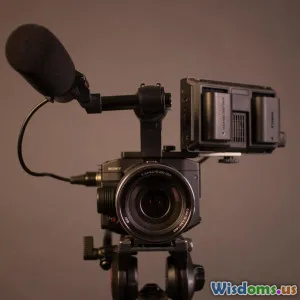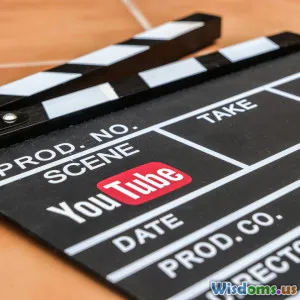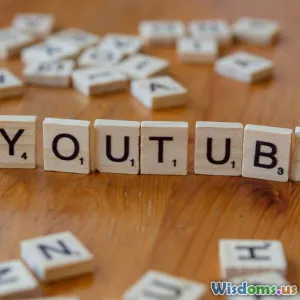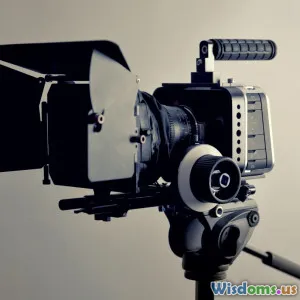
Storytelling Secrets for Unforgettable Explainer Videos
13 min read Unlock the art of compelling explainer videos using expert storytelling techniques and proven narrative structures. (0 Reviews)
Storytelling Secrets for Unforgettable Explainer Videos
Lights up, voiceover begins, animations swirl—and in less than two minutes, your entire brand message is crystal clear, understood, and remembered. That’s the promise of a well-crafted explainer video. But what elevates an explainer from merely informative to utterly unforgettable? The answer is storytelling. Creating explainer videos that stick isn’t about dazzling visuals alone—it’s about crafting a narrative that resonates, educates, and motivates. Let’s unlock the secrets used by the best in the business to transform dry facts into storytelling magic.
Know Who You're Talking To

The best stories only work when they’re tailored for the right audience. Start by identifying and understanding exactly who your explainer video is making an impression on.
Actionable Steps:
- Conduct Audience Research: What is their age, profession, and pain points? Software startups pitching to busy CTOs need a different touch than a charity explaining recycling to elementary teachers.
- Build Viewer Personas: Map out potential viewers and write down their challenges, priorities, hopes, and fears. For example, Slack’s explainer videos incorporate humor and scenarios perfectly suited to overworked office teams.
Practical Example:
Canva knows their audience: creative professionals and small businesses with limited design experience. Their explainer videos use friendly, simple language, and relatable scenarios—a new café owner needing a menu or a teacher making class posters.
Craft your story for one person, and others will follow.
Hook First, Explain Later

Humans are wired for stories that start with intrigue or conflict. The first ten seconds will determine if viewers stick around—so, make them count.
Examples That Work:
- DuoLingo’s Quick Hook: Their videos might open with a relatable situation—"Ever frozen at an airport abroad, unsure what to say?" We’re immediately pulled in by a scenario we fear or have experienced.
- Dropbox Classic: The early Dropbox animated explainer started with a scene everybody knew: the frustration of accessing important files remotely, instantly connecting with viewers’ pain points before explaining the solution.
Pro Tip:
Pose a question, show an unexpected visual, or present a problem before introducing your product as the answer.
Show, Don’t Tell

Visual storytelling can simplify even the most complex concepts. Instead of bombarding viewers with jargon, let dynamic visuals do the heavy lifting.
How-To Approach:
- Use Metaphors and Analogies: Adobe’s explainer for their Creative Cloud likens the product to a "toolbox"—a familiar concept anyone can grasp.
- Create Before/After Scenarios: Illustrate user journeys, transformations, or improvements front and center.
- Visual Demos Over Stats: Rather than saying, “Our software increases productivity by 40%,” animate a character completing work rapidly compared to the old way.
Case Study:
Trello transformed agile project management (a notoriously abstract concept) into relatable, visual stories: dragging tasks on a board, cards moving between columns, teams collaborating in real time. The tools make sense by being seen in a story.
Build Emotional Connection

Unforgettable explainer videos make people feel something—delight, relief, curiosity, urgency. Storytelling delivers emotional resonance to what could otherwise be dry data.
Tips for Creating Emotion:
- Personalize Your Characters: Even simple animated figures with expressive faces can elicit empathy. Give them names, jobs, little quirks.
- Don’t Shy from Humor: A little fun can break down barriers and make your content memorable. Think of Mailchimp’s goofy explainer mascots.
- Highlight Stakes: Show what happens if viewers don’t solve the problem. Emotional payoff comes from seeing stakes resolved onscreen.
Example in Practice:
Charity: Water’s animated explainer draws you into the story of a child whose life is changed by access to clean water. The result? Viewers feel—they don’t just learn.
Structure Your Story Like a Movie

Classic storytelling structure isn’t just for Hollywood. The hero’s journey, three-act structures, rises and falls—these frameworks make explanations sticky.
Practical Structure for Videos:
- The Setup: Who has a problem? (A harried manager missing deadlines.)
- The Confrontation: The scale and impact of the problem. (Missed deadlines hurt profits, stress rises.)
- The Solution: How your product changes everything. (Show the software introduced, instant improvement hailed.)
- The Resolution: Life after, transformed. (Manager relaxed, team happy, deadlines met.)
Insider Advice:
Write your script as a sequence of obstacles and resolutions. Use storyboards to map visual transitions, ensuring flow.
Keep it Short, But Powerful

Attention spans are short. The most successful explainers rarely exceed two minutes. Yet every second must build on the story and drive it forward.
Actionable Ways to Trim the Fat:
- Script Ruthlessly: Cut out repetitive phrases, extra adjectives, and tangents.
- Stay on Message: Each scene and example must tie directly back to your core message—no distractions or rabbit holes.
- Watch the Pacing: Use quick cuts or smooth transitions to keep things moving, but pause for emphasis on important moments.
Standout Short Video:
Spotify’s “How It Works” explainer is less than 90 seconds but cleverly demonstrates music search, playlists, and sharing, all embedded in relatable, everyday listening scenarios.
Use Authentic, Conversational Language

Your explainer should feel like a conversation, not a lecture. Ditch the corporate jargon; clear, simple language is king.
Checklist for Great Scripts:
- Write As You Speak: Read the script aloud to catch awkward phrasings.
- Favor Short Sentences: The easier to catch at a glance or by ear, the better.
- Voice With Purpose: Warm, friendly, and enthusiastic tones invite engagement.
Example for Inspiration:
Mint’s explainer video intentionally used language like, “Ever lose track of where your money goes? We can help fix that.” Direct, personal, and unpretentious.
Harness the Power of Sound and Music
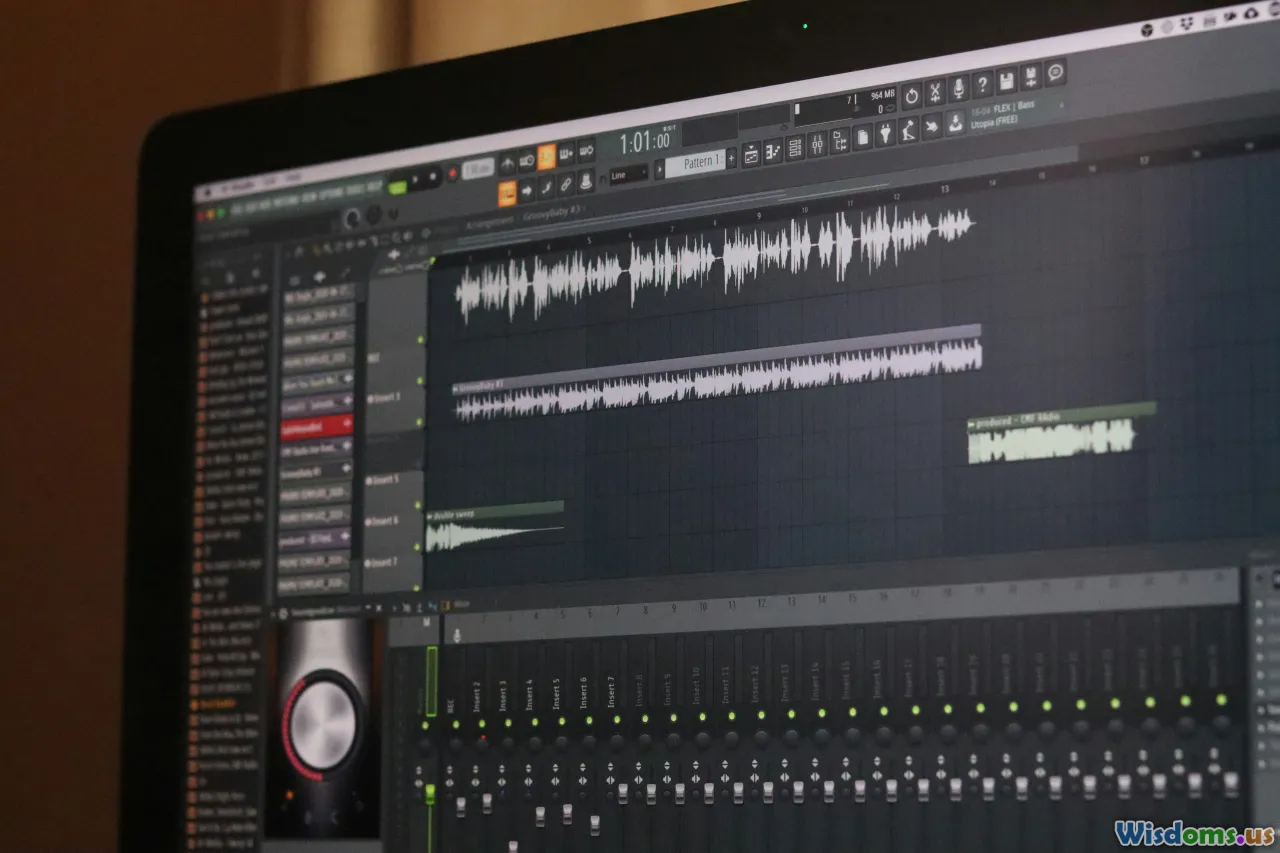
Sound is storytelling’s secret weapon. The right audio cues make transitions seamless and help etch your message into viewers’ memories.
Best Practices:
- Match Mood With Music: Upbeat tracks work for modern tools; calmer tunes may suit B2B content.
- Use Sound Effects Sparingly: Subtle “whooshes,” clicks or dings can reinforce key actions without distracting viewers.
- Narrate Clearly: Invest in a professional voiceover artist whose voice suits your brand personality.
Case Example:
Asana’s explainer uses crisp narration layered with soft electronic beats, echoing the brand’s organized yet cutting-edge feel.
Integrate Branding Without Overwhelming

Your explainer should embody your brand’s essence, not just splash on colors and logos for their own sake.
How-To Tips:
- Stick to Your Style Guide: Use approved color palettes, logos, mascots, and fonts. Consistency breeds trust and recall.
- Tell Brand Stories: Explain not just what the product does but why your company cares about solving this problem.
- Close with a Branded Call to Action: End your video with a memorable, on-brand message inviting the next step:
“Ready to finally organize your recruiting process? Join 1,000+ HR teams using Recruitee today.”
Exception:
Dropbox’s early videos were minimal on direct branding—just simple illustrated characters—but their quirky, approachable style became synonymous with their identity.
End with a Call to Action That Feels Natural

The final moments of your video are gold. Guide the viewer to act, but do so within the narrative frame you’ve built.
Effective Closings:
- Tie Back to the Hook: Remember the problem from the start? End by showing it solved—and invite viewers to join the solution.
- Keep Language Friendly: Instead of "Purchase Now," try “See what your team could achieve—try it for free.”
- Offer Social Proof: “Join over 10,000 satisfied customers.” Reassurance boosts conversions.
Example:
Slack’s explainer smartly ends with: “Ready for smarter teamwork? Get started, free.” Short, direct, and aligned with the story told earlier.
Masterful Explainer Videos are Crafted Stories

Done right, explainer videos become more than animated marketing—they’re stories your audience welcomes and remembers. It’s not the features or specs that turn viewers into customers—it’s the feeling of being understood, the satisfaction of seeing a problem solved, all wrapped in a watchable minute or two.
From Pixar-like emotional arcs to the authentic simplicity of your voiceover script, storytelling is the secret ingredient. Anchor your next explainer video in stories, and you’ll win hearts—and conversions—before the screen fades to black.
Rate the Post
User Reviews
Popular Posts










